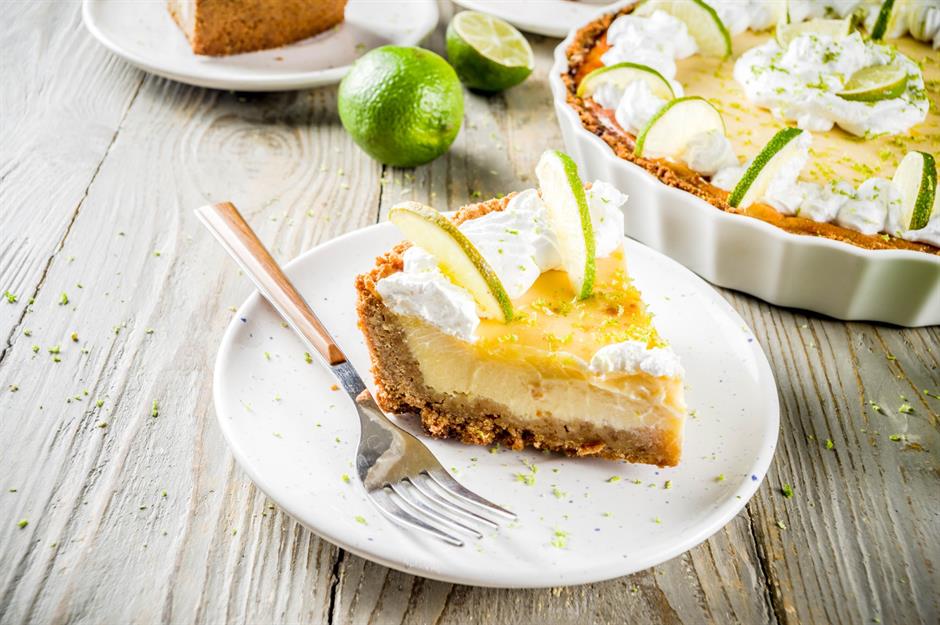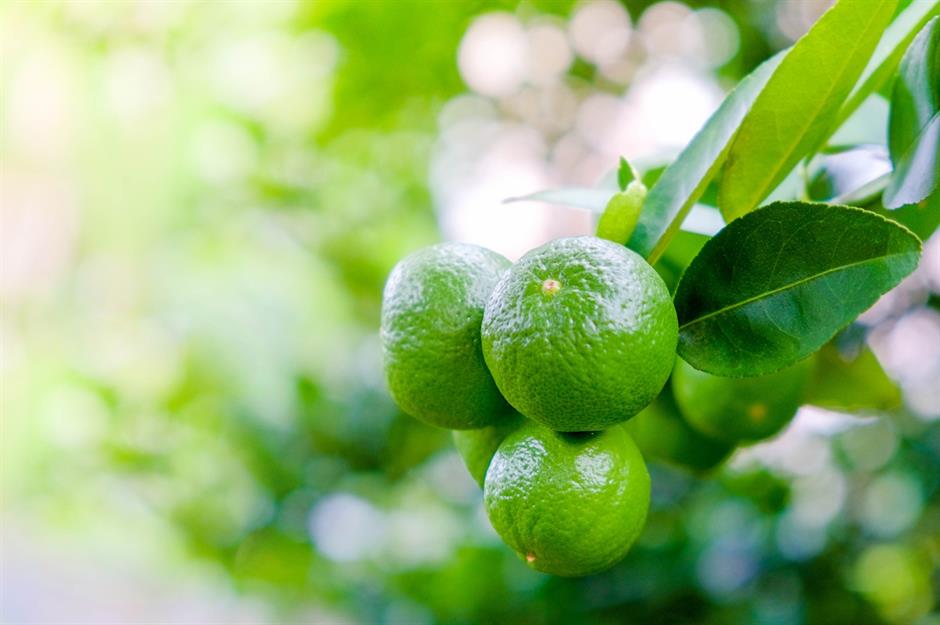The amazing history of Key lime pie
Key lime pie: an origin story
Creamy, zingy, and decidedly sunny, there are few things so synonymous with Florida as its famous Key lime pie. This delicious dessert is beloved all over the US, especially at Thanksgiving – but how did the Sunshine State’s most celebrated pie come to be? It's a surprisingly complex and hotly debated topic, with some zesty details along the way.
Click or scroll through our gallery as we take a look at the many stories and legends surrounding this favorite citrussy treat.
Coming to America
You simply can’t make a Key lime pie without using limes – but how did these tasty green fruits get to the Americas in the first place? The answer goes back further than you may think. Rather than being native to the Southern United States, wild limes are thought to have been brought to Europe from Indonesia by returning Crusaders in the 12th and 13th centuries. A couple of hundred years later in 1493, Christopher Columbus was responsible for bringing citrus seeds to the West Indies, Mexico, and Florida – and the fruits have flourished there ever since.
What makes a Key lime different?
To the untrained eye, a Key lime may seem like any other lime – but really there are a few ‘key’ differences. Also known as Mexican limes or West Indies limes, Key limes tend to be a lot smaller than the standard Persian variety, with a diameter of roughly one or two inches. They’re also a little more yellow, with thinner rinds. They taste different, too: Key limes are more aromatic than their Persian counterparts, making them perfect for pairing with sweet ingredients to create delicious desserts.
A stormy setback
Key limes were grown commercially in Florida until 1926, when the Great Miami Hurricane ripped through Miami, the Bahamas, and the US Gulf Coast, wreaking irreparable damage on crops in the Florida Keys. The damage to the area’s Key lime groves was so extensive that growers had no choice but to replace them with Persian limes, which are hardier and more likely to survive harsh weather conditions. As such, real-deal Key limes are now imported to the US from Central or South America.
But what about the milk?
Key limes are a given, but there’s also another ingredient that Key lime pie couldn’t exist without: condensed milk. Due to the Florida Keys’ isolated location, cows were few and far between during the 19th century, meaning that dairy products were quite hard to come by, too. That is until 1856, when Gail Borden created sweetened condensed milk. Aside from fulfilling Floridians' need for dairy, the thick, gooey stuff had the added benefit of not requiring refrigeration – a utility that was also unavailable in the Keys back then.
Aunt Sally and the Curry Mansion
The most famous story behind Key lime pie is probably that of Aunt Sally, a cook who worked for self-made millionaire William Curry back in the late 19th century. Aunt Sally is said to have created the iconic dessert in the kitchen of the historic Curry Mansion Inn in Key West, but opinion is split as to whether she got the idea from local sponge fishermen (whose rations included canned milk and citrus fruit), or whether she simply swapped the lemons in her lemon icebox pie recipe for limes.
The Magic Lemon Cream Pie theory
Though the Aunt Sally story might be a little more fun, there’s another theory as to how Key lime pie came to be. In 1931, Gail Borden's condensed milk company published a recipe for ‘Magic Lemon Cream Pie,’ a dessert containing condensed milk, lemon juice, and egg yolks, and covered in meringue. According to pastry chef Stella Parks, users of the recipe adjusted it to their tastes by adding local ingredients – meaning that Key lime pie could simply be a Floridian take on a 20th-century citrus classic.
What’s in a Key lime pie, anyway?
The basic ingredients of Key lime pie couldn’t be simpler: just combine Key lime juice, egg yolks (which give the pie its signature yellow color), and sweetened condensed milk. The crust can be made with pastry or graham crackers – and if you’re so inclined, you can top your deliciously tart creation with meringue or whipped cream. Just don’t fall foul of the two Key lime pie deadly sins: using green food coloring, and using any lime other than the Key lime.
Key lime pie variations
Key lime pie may be a Floridian institution, but that doesn’t mean everyone makes it the same way. In fact, you’ll find lots of different takes on this citrus classic throughout the Keys – some adding butter, some adding ice cream, some baking, and some not. Famous Key lime pie eatery Kermit’s Key West Key Lime Shoppe makes chocolate-dipped Key lime pie popsicles, while the Florida Key Lime Pie Company serves up its pies in a variety of vessels, from plates and cups to coconut shells.
Unlawful pie ingredients
To say that Floridians are particular about what goes into their pies is an understatement. In fact, in 1965, Florida State Representative Bernie Papy, Jr. introduced legislation that called for a fine of $100 to be levied against anyone that advertised Key lime pie that had not been made with Key lime juice. The bill may have failed, but the 'proper' recipe is still championed in restaurants across the Keys today; the best restaurants pride themselves on using nothing but Key lime juice in their recipes.
The pie achieves official status
July 1, 2006 was a momentous day for Key lime pie enthusiasts, with the citrus favorite being crowned the official state pie of Florida. The road to victory wasn’t easy, though, as it faced stiff competition from another Florida staple: the pecan pie (made with nuts from the state’s many pecan groves). However, 106 out of 120 House of Representatives voters couldn’t be convinced that there was a more thoroughly Floridian pie than the Key lime variety, and it’s served as a state symbol ever since.
A little healthy competition
Key lime pie may be Florida’s official state pie but, somewhat surprisingly, it isn’t Florida’s official state dessert. As of July 1, 2022, that particular honor goes to the decidedly less citrussy (but equally delicious) strawberry shortcake. It’s a little-known fact that the Sunshine State is the second-largest producer of strawberries in the US – and this whipped cream and fruit delight is a mainstay of bakery menus across the state, with Orlando eateries Carlo’s Bakery and Charlie’s Bakery and Creamery naming it their top-selling treat year-round.
A zesty celebration
Today, Key lime pie is as popular as ever, with tourists and locals flocking to Florida’s many bakeries and restaurants for a slice of the zingy stuff. In fact, the dessert is so deeply ingrained in Floridian culture that, each July, it has its very own festival: the Key West Key Lime Festival, a foodie celebration of Florida Keys’ ‘citrus, eccentrics, people, and pie.’ The star event? The Key lime pie eating contest (pictured).

